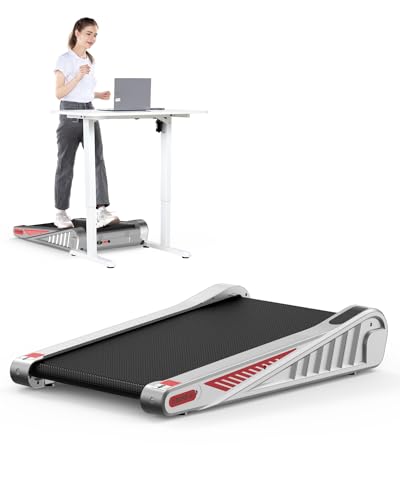15 Up-And-Coming Trends About Treadmill Non Electric
Treadmill Non-Electric: The Eco-Friendly Fitness Solution
In a period dominated by electric devices and high-tech gizmos, the humble non-electric treadmill stands out as a beacon of simplicity and performance. Frequently overshadowed by their state-of-the-art equivalents, non-electric treadmills use various benefits that deal with a sustainable lifestyle and a strong exercise. This blog post will check out the advantages, functionality, and range of non-electric treadmills, making a strong case for their function in contemporary physical fitness regimens.
What is a Non-Electric Treadmill?
A non-electric treadmill, also referred to as a manual treadmill, runs without electric power. Instead, it depends on the user's energy to move the belt. simply click the up coming internet page of treadmill normally has a curved or flat running surface and a belt that moves as the user walks or runs, thus offering a full-body cardiovascular workout.
Secret Features of Non-Electric Treadmills
Function
Description
Source of power
Manual operation (user-powered)
Design
Curved or flat treadmill surface area
Mobility
Typically lightweight and easy to move
Durability
Less mechanical parts; often made of premium products
Expense
Normally more cost effective than electric treadmills
Footprint
Normally smaller sized, making them ideal for minimal areas
Noise Level
Quieter operation compared to electric versions
The Advantages of Non-Electric Treadmills
1. Eco-Friendly
Non-electric treadmills are a sustainable option for physical fitness enthusiasts. With no electricity usage, they lower carbon footprints and total energy usage.
2. Affordable
With fewer mechanical components and no wiring systems, non-electric treadmills are normally more economical. This makes them accessible and attractive to individuals aiming to keep a healthy way of life without breaking the bank.
3. Increased Workout Intensity
Because the user powers the belt, they have complete control over their exercise's intensity. The more difficult you press, the more calories you burn. This self-powered function encourages a more engaged workout, pressing limitations for a better fitness result.
4. Compact and Portable Design
A lot of non-electric treadmills have a lightweight building and construction and smaller footprint, making them simple to shop and transportation. This feature allows users to incorporate cardio exercises into various settings, whether in the house, in the workplace, or at a health club.
5. Lower Maintenance
Non-electric treadmills have fewer moving parts than electric variations, which equates to decrease maintenance costs and fewer mechanical failures with time.
Kinds Of Non-Electric Treadmills
Non-electric treadmills come in different styles to accommodate diverse physical fitness needs. Here's a quick summary:
Type
Description
Curved Manual Treadmill
Features a curved running surface for a natural gait. Outstanding for sprinting and interval exercises.
Flat Manual Treadmill
A straightforward design comparable to conventional treadmills however powered by the user's movement.
Foldable Manual Treadmill
Compact design that can be quickly folded and stored away when not in use. Perfect for little living areas.
All-Terrain Manual Treadmill
Designed for outdoor use, these treadmills often include a rugged develop and traction control.
Often Asked Questions (FAQ)
1. Are non-electric treadmills suitable for novices?
Yes, non-electric treadmills can be suitable for novices. Users can adjust the intensity and speed of their exercises based upon their physical fitness level.
2. Can I use a non-electric treadmill for running?
Definitely! Many non-electric treadmills, especially curved models, are designed for running. Their self-powered nature permits users to take part in jogging or sprinting.
3. What types of exercises can I perform on a non-electric treadmill?
Users can take part in various workouts, including walking, running, running, interval training, and even hill exercises by changing their position.
4. How do I preserve a non-electric treadmill?
Standard upkeep includes routinely checking the belt for wear, ensuring it is centered, and cleaning the surface to prevent particles from affecting motion.
5. Are non-electric treadmills loud?
Non-electric treadmills tend to be quieter than electric ones, as they do not have motors that can produce sound. Users might still generate sound based on their speed and weight.
Tips for Maximizing Your Non-Electric Treadmill Workouts
To get the most out of your non-electric treadmill sessions, consider the following suggestions:
Warm-Up Properly: Always start with a warm-up session to prepare your body for the workout.
Incorporate Interval Training: Alternate in between high-intensity sprints and moderate walking to boost calorie burn and improve endurance.
Focus on Form: Maintain appropriate posture and kind while running to lower the risk of injury.
Hydration is Key: Keep water nearby to remain hydrated during your exercises.
Track Your Progress: Use a physical fitness tracker or smart device to monitor your exercise performance and progress over time.
The non-electric treadmill stands apart as a long-lasting, environmentally friendly piece of exercise equipment that successfully accommodates both beginners and experienced fitness enthusiasts. With its multitude of advantages, consisting of cost-effectiveness, ease of use, and mobility, it supplies a sustainable choice in the evolving fitness landscape. For those looking to streamline their exercises while embracing an active way of life, non-electric treadmills might be the ideal service. It's time to redefine your workout experience away from the distractions of technology and towards the essentials that keep you fit and healthy!
